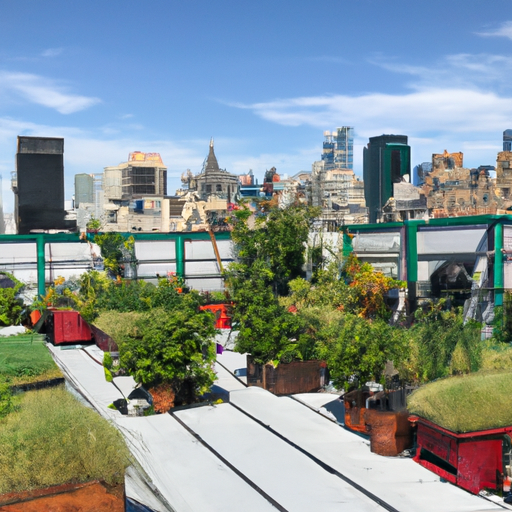Urban agriculture is an incredibly cool concept. It’s all about growing food within cities and communities, bringing the farm right to people’s doorstep! From community gardens to rooftop farms in downtown skyscrapers, urban ag is an awesome way of feeding folks while bringing the green back into grey areas.
From health benefits to sustainability practices, there are plenty of reasons why taking up urban farming could be a great move. Let’s take a deeper look at what this is, how it started, and what kind of challenges come along with it.
History of Urban Agriculture
Urban Agriculture, or ‘UA’ for short, is far from a new concept. You could even say it dates back to Ancient Egypt and Mesopotamia when early urbanites used technology to cultivate crops, livestock, and fisheries in the heart of their cities. But over the centuries, cities have become increasingly disconnected from nature due to industrialization, population growth, and land-use changes.
Fast forward to the 20th century and things started to shift. As a conservationist movement grew and people began to recognize the importance of renewable energy, sustainable agriculture, and local food production, UA has taken hold in so many city centers. There’s now no denying that growing food in the city is an effective way of supporting the local economy – and it’s all about getting back to our roots as human beings.
One of the most noteworthy examples came in the 1950s when the Detroit Agricultural Network began a community-wide initiative to revive the city’s thousands of vacant lots by turning them into farms. From the start, this network promoted collaboration between farmers, gardeners, and local businesses, creating a sense of collective ownership.

And since then, there’s been no looking back – UA continues to explode in popularity as more and more cities create food policies that promote sustainability, health, and local farming. Whether it’s composting, urban gardening, or rooftop farming, there are countless approaches to urban agriculture and its benefits are far-reaching.
Types of Urban Agriculture
Urban agriculture is becoming more popular as a way for city folk to get their hands dirty and get away from the hustle and bustle. And just like everything else, there’s a slew of different types of urban farming—from community gardens to rooftop farms. Here’s a quick rundown.
Community Gardens
The OG of the urban farming world, community gardens have been around awhile. They work like this: a group of people pool their resources—land, time, money—and they all help out with tasks like planting, watering, harvesting and maintenance. These gardens can be shared with others outside the original group or kept private.
Rooftop Farming
This type of urban ag takes farming to new heights (literally). Rooftop farming transforms unused roofreal estate into productive space—making it perfect for growing food in urban environments. Plus, since you don’t have to worry about critters munching on your crops or digging up your soil, plus you get some killer views.
Vertical Gardening
Gardens don’t have to be restricted to just two dimensions; vertical gardening lets you stack plants so you can fit more of them in a small area. Plus the extra height helps ensure that your vegetables are getting enough sun. Word of warning though, make sure you check with your local building codes first, cuz some places won’t let ya build a vertical garden.
Challenges of Urban Agriculture
Urban farming ain’t easy, folks. There are plenty of challenges to consider when trying to cultivate food in a big city hub. From battling the urban heat island effect – where the air temperature is higher than surrounding suburban and rural areas due to concrete, asphalt, and lack of vegetation – to battling higher levels of pollutants, the deck is stacked against farmers who try to make their mark in the city.
The most serious challenge, however, is land access. Finding an area that you can use as safely and sustainably as possible is paramount. Zoning laws have to be obeyed, leases secured, and neighborhood approval (some of the toughest critics) can’t be taken for granted. Then there are issues like water sourcing and access, soil contamination, pest management, and other legal restrictions that need to be dealt with if you want to make it in the world of urban agriculture.
These obstacles can seem daunting, but don’t get discouraged! With the right know-how and resources, you can overcome any challenge and make your urban farming dreams a reality.
Solutions to Challenges of Urban Agriculture
City living is tough, so it’s no surprise urban agriculture can be even tougher. But that doesn’t mean we can’t find ways to make it work – there are plenty of solutions out there, and I’m going to cover the best ones.
First up: finding space for your urban garden. One great way to do this is by taking advantage of empty and abandoned lots in your city – often times these are owned by the municipality and can be put to good use with a bit of elbow grease. Or you can look into roof top farming or vertical gardening, both of which will help you maximize smaller spaces.
Next up: water access. If you’re struggling to find water sources for watering your plants, don’t forget to look upwards – quite literally! Rain barrels are an excellent choice for harvesting rainwater, especially if you can install them at the highest point on your property.
Soil quality is another major challenge for urban agriculture. Since you probably won’t have access to large amounts of acreage to boost soil quality naturally, you may have to invest in some soil amendments or fertilizers to get the job done. However, depending on where you live, there may also be some more unconventional methods you can use – vermicomposting (composting with worms) and aquaculture (growing edible fish alongside vegetables) are two great examples.
Finally, dealing with pests and diseases is always a tricky subject. Chemical insecticides and fungicides are usually our go-to solution, but if you want to go green, then natural pest control methods can help reduce the damage caused by troublesome critters. Companion planting, traps and nets, and beneficial predators are just a few of the options available.
Conclusion
It’s been quite a ride, hasn’t it? We’ve discussed the importance of urban agriculture, reviewed its history, and explored the various types that exists. It’s clear that this is an important topic with a variety of benefits, from improved access to local, fresh food to increased job opportunities. But with such great potential comes great challenges. Thankfully, we’ve identified several solutions to help alleviate some of the issues facing urban agriculture. In conclusion, urban agriculture is becoming increasingly popular and for good reason. With its many potential benefits, it has the potential to transform our cities and rural areas alike. And though there are significant challenges which need to be addressed, with the right strategies, these can be easily overcome. So whether you’re a green thumb or just jumping into the “ag” world, consider how urban agriculture might help you. There may be more to it than meets the eye!
Urban Farming FAQ
How urban agriculture can improve food security in US cities?
As someone who has covered the inner cities of America for years, I can tell you that urban agriculture has become an increasingly important way to improve food security in cities across the nation. In an effort to provide fresh fruits and vegetables to low-income communities in cities, urban agriculture projects have been popping up all over the place.Urban agriculture takes many forms, from small community gardens to larger-scale farms. Community gardens, which are typically run and maintained by volunteers, are a great way to bring fresh, healthy food to disadvantaged areas. These gardens are often located in public parks, vacant lots, and other areas where people can access them. They can also be as small as a few rows of vegetables or as large as a few acres of land. Additionally, urban farms are becoming increasingly popular in cities. These farms are often located on abandoned or underutilized land, and they are often run by organizations that have a mission to provide fresh produce to those in need.Beyond providing fresh produce to local communities, urban agriculture can also have a positive economic impact. It can provide employment to those living in the city, as well as create new businesses and increase the value of properties in the area. Urban agriculture projects can also help to improve the environment by reducing food waste, increasing green space, and conserving natural resources.Urban agriculture is an effective tool for improving food security in US cities. It can provide fresh, healthy produce to those in need, as well as create employment opportunities and improve the environment. Above all, it provides a powerful message of hope and opportunity to those in need.
What is an environmental benefit of food crops being grown in urban city locations?
Growing food in urban city locations can bring many benefits to the environment, like reducing food miles and packaging. It can also reduce urban heat islands, as urban areas are typically hotter than their rural counterparts due to the lack of vegetation. By growing food crops in urban areas, the presence of natural vegetation, along with the heat generated from photosynthesis and increased shade, can reduce the temperature of the area, helping to reduce city temperatures overall.
Urban agriculture can also improve air quality by increasing the amount of oxygen available and filtering the air with photosynthesis. The soil microorganisms in urban farms can also help reduce levels of airborne pollutants and heavy metals. Additionally, urban farming can help reduce storm water runoff and manage flooding, since soil can absorb water, preventing it from running off into nearby waterways.
Urban agriculture can also promote biodiversity. By growing food in urban areas, we can support the local wildlife, providing food and shelter to beneficial pollinators like bees, butterflies, and birds. Urban farming can also help increase the diversity of crops available, providing more access to healthy, fresh fruits and vegetables to local communities.
What is an advantage of urban farming and local food movements?
When it comes to the advantages of urban farming and local food movements, one of the most compelling is that it allows communities to be more self-sufficient and less reliant on external sources. Urban farming ensures that fresh, locally-sourced food is available to city dwellers, while also providing employment opportunities and educational experiences.Moreover, urban farms yield multiple economic and environmental benefits. Not only can cities use unused land for urban farming, but they can also create more green space, and even sequester more carbon than conventionally farmed fields, thereby reducing their carbon footprint.Plus, having local food production can help lower the cost of food for cities, as it eliminates transportation and refrigeration costs, and therefore makes food produced in the city less expensive.What’s more, urban farming and local food movements are also great for building social cohesion. By engaging in agricultural activities and mutually producing food, people from different backgrounds can strengthen their relationships, while also learning more about each other’s values and beliefs.In conclusion, urban farming and local food movements offer a unique opportunity for communities to become more self-sufficient and less reliant on external sources, while also providing multiple economic and environmental benefits, as well as improving social cohesion.

